One day some years ago I was riding my gelding Khami at a fast trot along some side trails, then dropping into a sweet arroyo, then swooping back out of the sand to head up a rocky hillside. The light and shadows created by low hung branches played across the canyon, the sun kissed the tips of my horse’s flying black mane as we moved along together, feeling as one, like we had done for so many miles before.
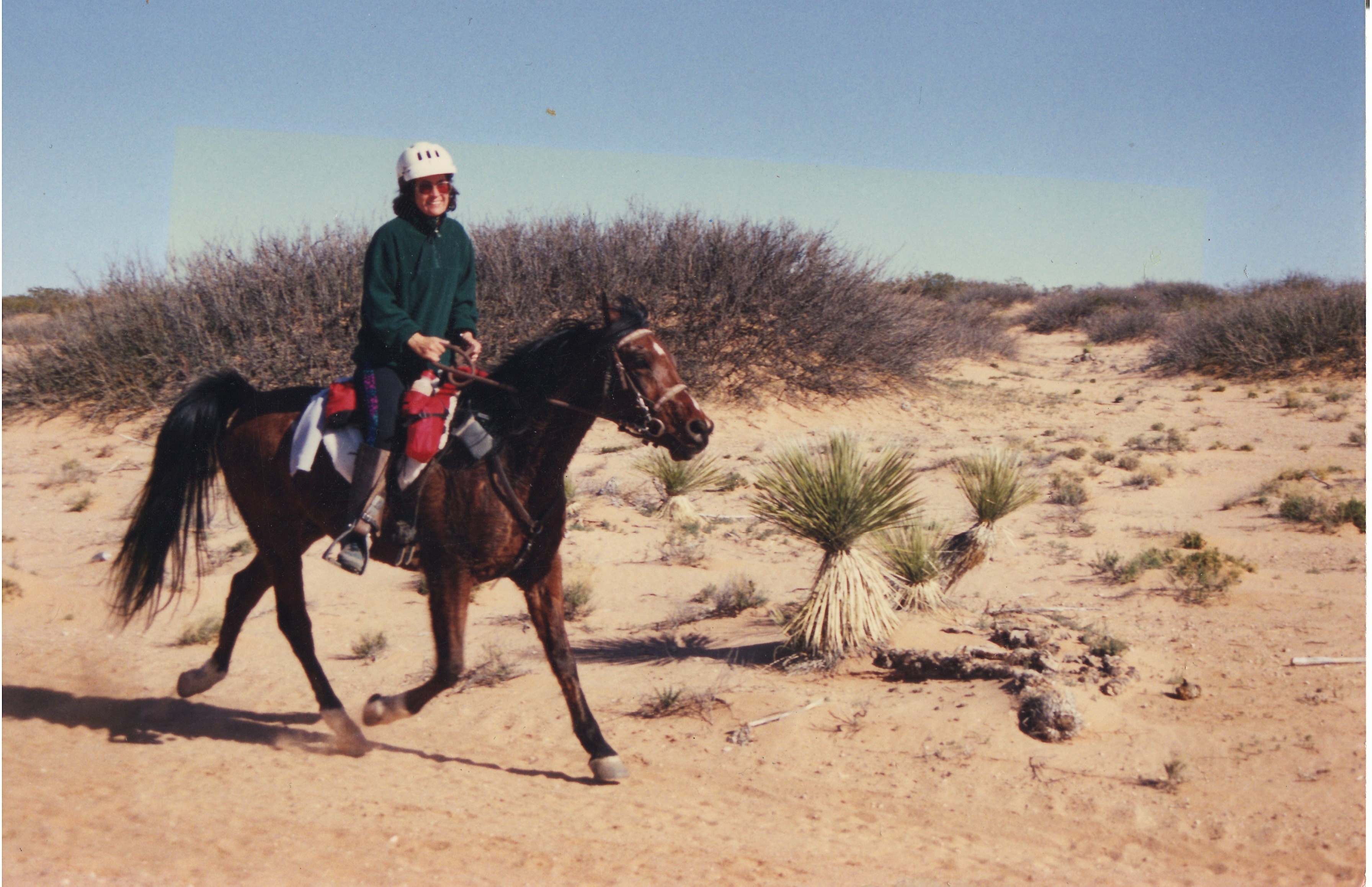 My right foot suddenly slid out of the stirrup. The action jolted me out of my state of bliss. I could slip my foot back in pretty well at that time, without slowing down. But then it kept happening.
My right foot suddenly slid out of the stirrup. The action jolted me out of my state of bliss. I could slip my foot back in pretty well at that time, without slowing down. But then it kept happening.
Back then, I had a tendency to ignore those things and keep going. Put the foot back and pretend it never happened. But from thereon, it kept happening and it was annoying because I was jolted out my wonderful feeling of connection in riding my horse.
So I went to my bodywork practitioner to find out why. She worked on my pelvis and legs to realign them and get them talking to each other. Not surprisingly my shoulders were also involved. I felt so much better afterwards and my foot stopped losing the stirrup!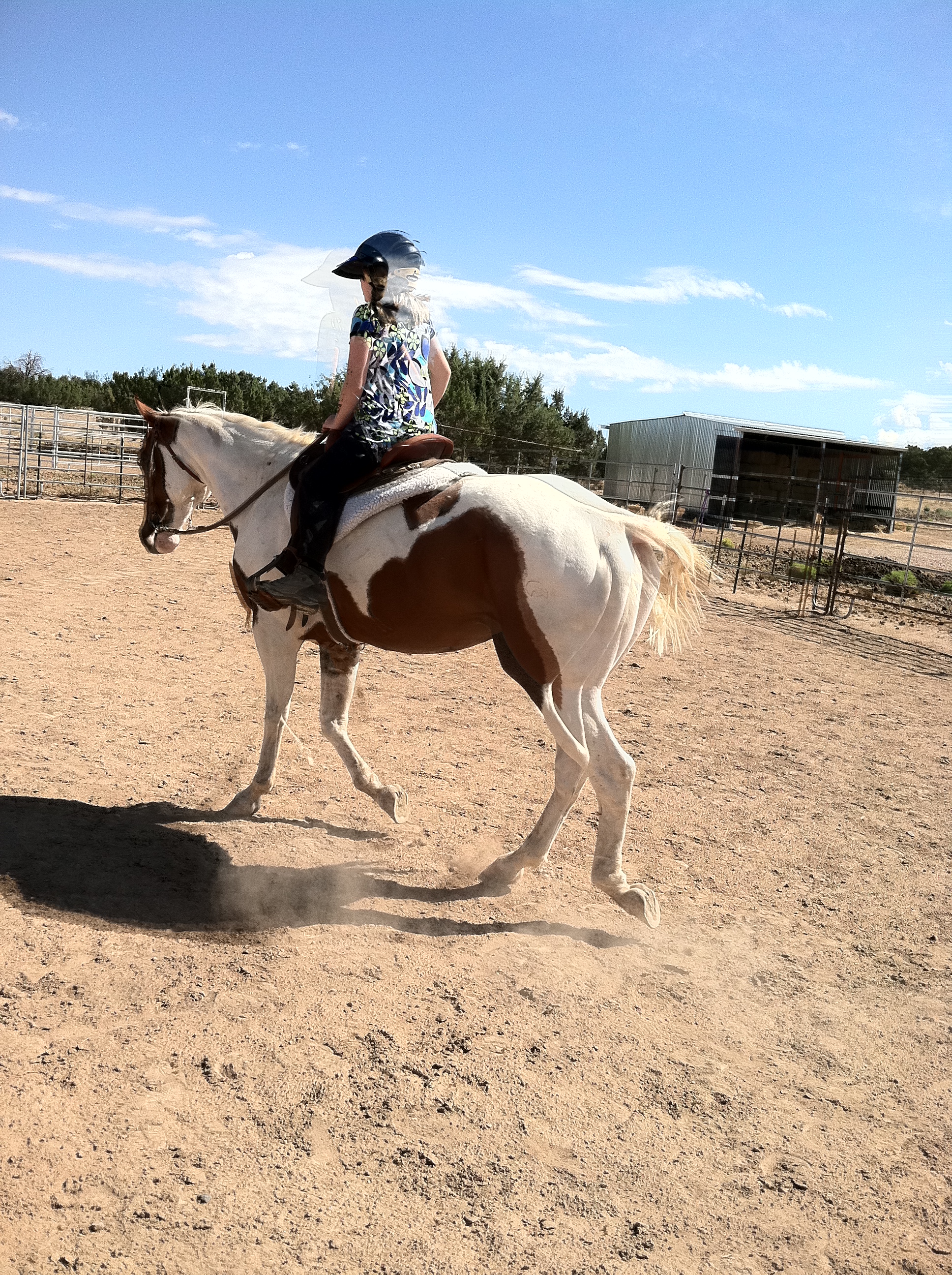
At that time, those were the so-called “little” things that would get me into someone’s office to get bodywork – when I wasn’t able to ride my horse properly!
Horse people tend to not take care of themselves, but will take care of their horses first. This is why I have an Ortho-Bionomy/EPR practice for both humans and horses, because the two are intertwined. Just like I was intertwined with my horse when my foot kept coming out of the stirrup. Until I couldn’t do what I love, everything was just fine.
If my horse had needed something, the foot coming out of the stirrup thing would’ve had to wait until later.
We all have a priority list, whether it’s written down or not, of what is most important to us in terms of our horses.
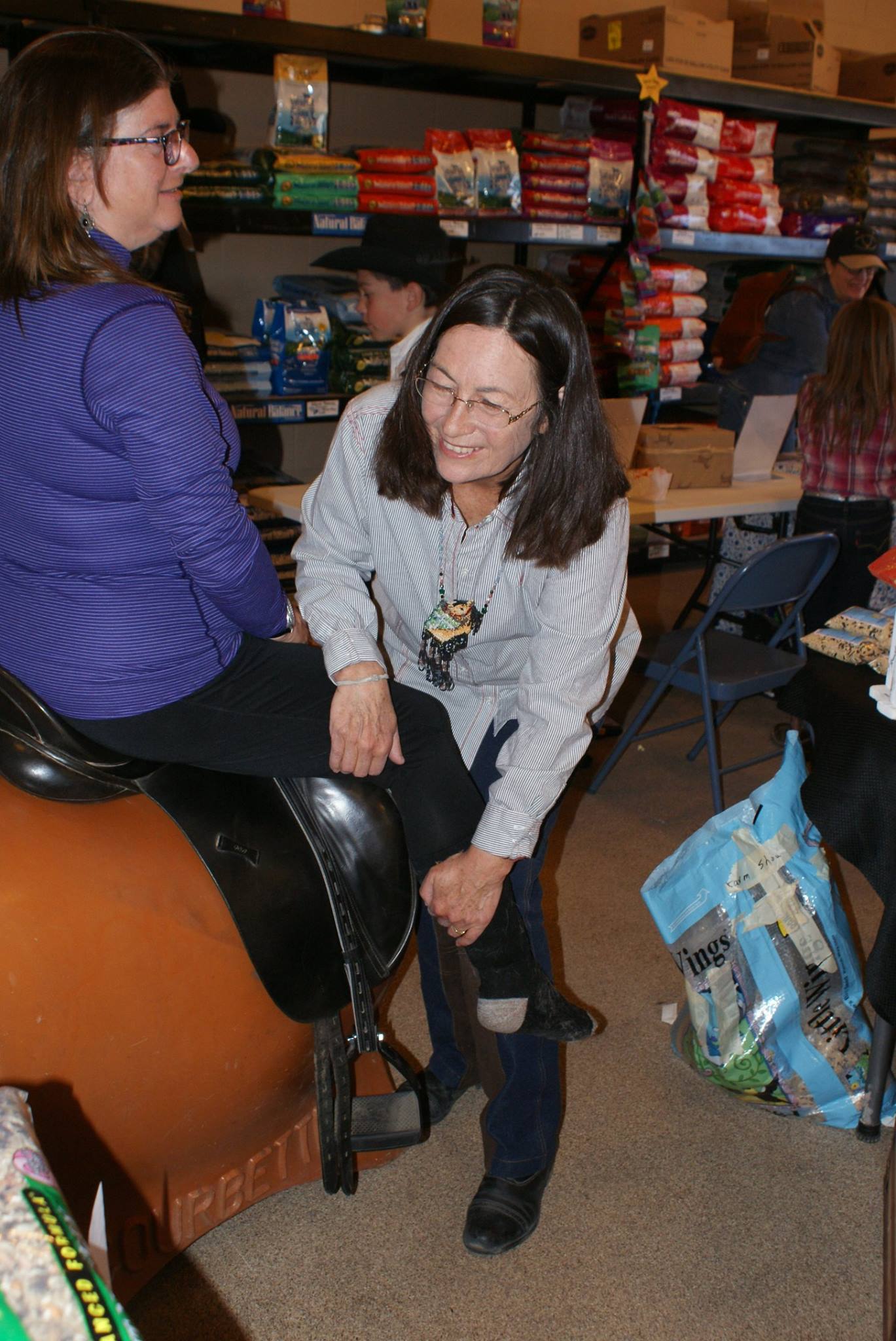
A couple of weekends ago I did a demonstration for riders at a local feed store. I had a dummy horse that people could sit on, designed to try saddles. We had a saddle on it, and people could sit there and I could do bodywork on them.
What were the most common complaints? Knees, feet, lower back, upper thighs, hips, rotation in the pelvis (although most didn’t know that’s what had happened), shoulders, neck, and numbness in the feet and limbs. The most common replacements done? Knee and hip replacements.
My point here is that everyone who got on my little dummy horse had some past injury or some complaint that could be helped with some bodywork. Three out of ten people were receiving regular bodywork.
If I had these people sitting on their own horses, I could do the work on the horse too and the horse could help them with their physical problems. The owner could help the horse by recognizing the places where the horse
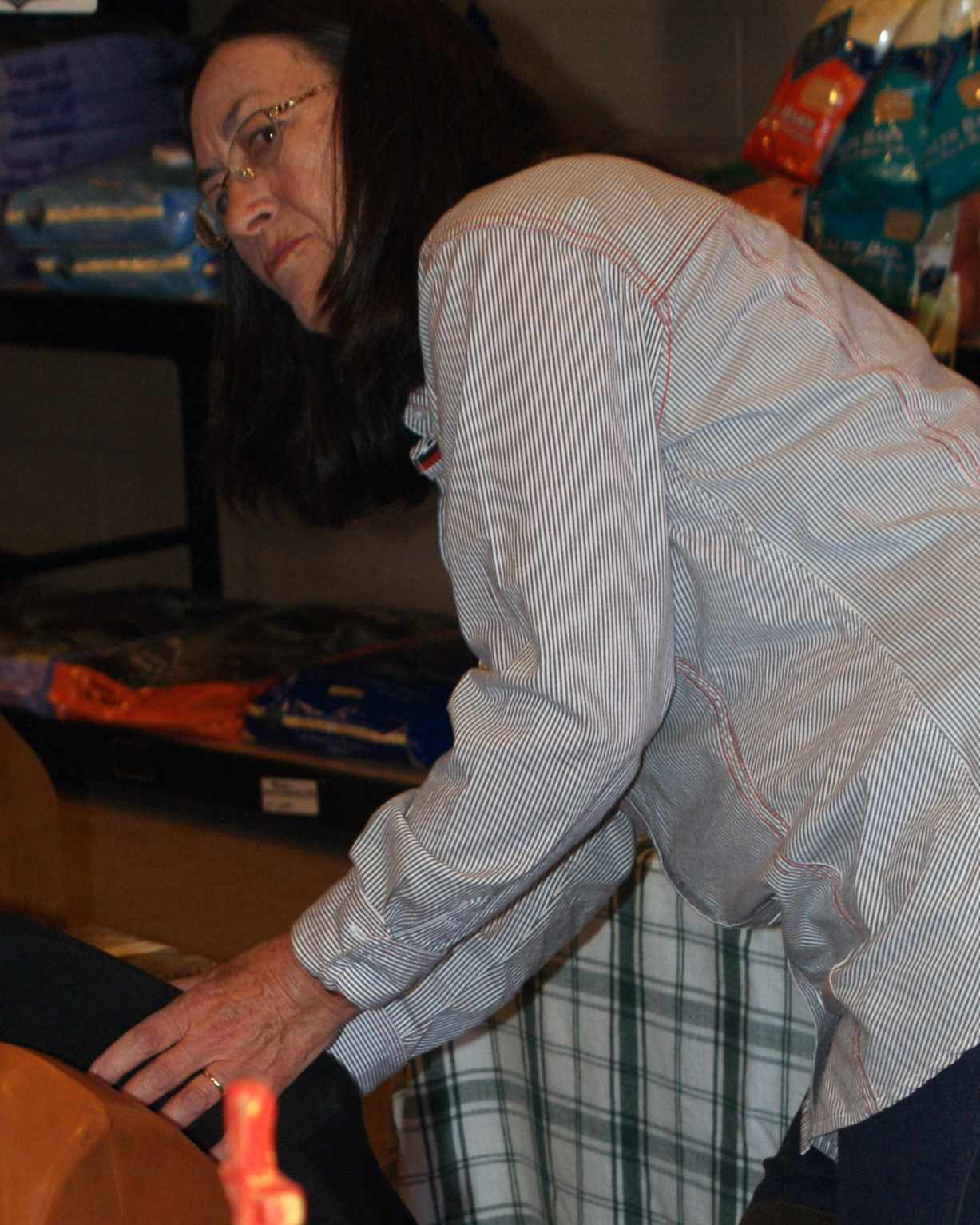
needed help.
The opportunity to help the horse by getting the rider to ride more comfortably is definitely there. Bodywork helps people be able to sit a horse in a more balanced way and to take the restrictions out of tight areas. The horse can then relax and not feel he has to “prop up” the rider in various areas. He may find himself sagging in other areas where he can’t hold the rider up. The rider doesn’t have the body awareness to keep the horse from falling forward onto a shoulder or inhibits his ability to track forward from behind.
For those people who want to be able to ride into their golden years, this is important stuff. We can only accomplish this with regular maintenance to ourselves. Yes, we have to buy hay, the truck needs a new transmission, the horse just had dental care, and there we are getting more uncomfortable in our skins and taking that to the backs of our horses.
Do you ever wonder why horses have “on and off” days? I check to see what it is my body is doing that might be contributing to the horse’s lack of enthusiasm. Did I do my stretching exercises this morning before riding? Does the horse have restrictions of her own?
Not everyone is attuned to what the horse is feeling in his body. They may only get an awareness of it if he is lame or otherwise unable to carry them. This takes a trained eye, either from years of looking or experiencing a lot of different horses and their physical issues. You can get someone with a trained eye to do it for you, or you can work on developing this skill yourself just be watching.
I talk a lot about relationship and liberty, but after liberty we gravitate to the saddle if we can. The preparation for the saddle needs to contain the same care we use in our relationship with the horse, because it is an extension of the relationship building, a new frontier in developing great trust. A horse doesn’t automatically want you on his or her back.
To pay attention to your own comfort as well as the horse’s comfort will be one of those first steps in riding relationship building. It’s hard to fully come into relationship when your body isn’t right on the ground, let alone in the saddle.
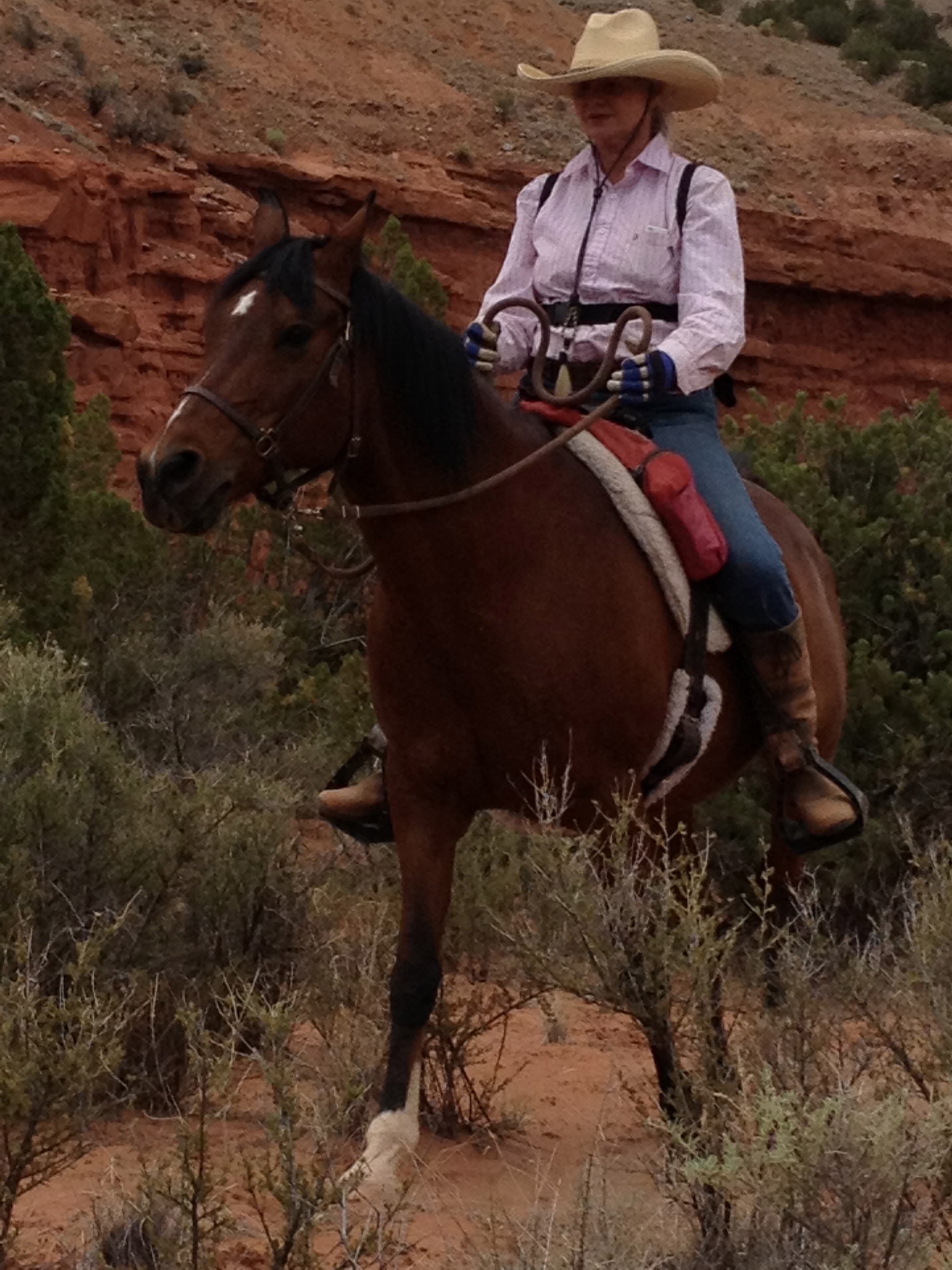 As an example: I fractured my pelvis five years ago. My main concern as I was recovering was, will I ride again? Granted, having had a major structural injury requires more maintenance than a broken fingernail as time goes on. But in a way, I’m thankful for that injury for bringing my attention to the needs of my body. It has made me super aware. Keeping my body lined up and comfortable, and comfortable for my horse, takes particular effort.
As an example: I fractured my pelvis five years ago. My main concern as I was recovering was, will I ride again? Granted, having had a major structural injury requires more maintenance than a broken fingernail as time goes on. But in a way, I’m thankful for that injury for bringing my attention to the needs of my body. It has made me super aware. Keeping my body lined up and comfortable, and comfortable for my horse, takes particular effort.
If I don’t do this, I figure my riding days are numbered. I can’t ride for as long or hard as I once could, but it doesn’t really matter. I can still fly along arroyos on my wonderful horses, I can take them climbing in the mountains. Where my legs might not be able to carry me, my horses can and will. Meanwhile, I promise I will do my best not to be a sack of potatoes on their backs.
We will be working with these exciting challenges at our Sahaja 2015 Clinic held in St. Vincent & the Grenadines, December 7-11, 2015, in conjunction with Stina Herberg’s class on developing the classical dressage seat. The clinic will encompass liberty training, bodywork and riding. See below for more details.
I will also be working with people and horses individually and as teams here at home in Santa Fe.
(copyright: Susan Smith, OrthoHorse)
*****
Keep an eye on the calendar as more events will be added as they are planned.
Services: Bodywork: (Ortho-Bionomy for people, Equine Ortho-Bionomy, Equine Positional Release (EPR)): private sessions, tutorials, phone consultations, Horse & Rider sessions, distance healing communication and gift certificates
Liberty Coaching: clinics, mini-clinics, workshops, private and semi-private sessions, tutorials, consultations: by appointment: 505.501.2478 or emailing susansmith@orthohorse.info Scheduling now. Contact me for details.
I’m now putting together the 2015 Clinic Calendar. Let me know if you want to do a clinic in your area. Prices will vary according to location.
March/April Clinic in Santa Fe: Stay tuned for dates!
April 10-12 – Spring Liberty Weekend in Oklahoma — Susan Smith and Ruella Yates, co-instructors. Contact either of us: susansmith@orthohorse.info or ruella@libertyfoundations for further details.
September 26-27 – Fall Weekend Liberty Foundations Clinic in Oklahoma — Susan Smith and Ruella Yates, co-instructors. Contact either of us: susansmith@orthohorse.info or ruella@libertyfoundations for further details.
Who will benefit from this work?
All horses and humans, but specifically:
- Horses who have not responded to traditional natural horsesmanship
- Horses who have been frightened, abused and in other ways traumatized
- Horses who may be aggressive or too passive in their herd situations
- Horses who have problems with humans
- All humans who may be puzzled about relationship with horses and want to deepen their connection.
December 7-11 Sahaja 2015 5-Day Clinic on the island of St. Vincent in the Caribbean – Susan Smith & Stina Herberg. See details:
Independent Liberty Trainers Network
Susan & Stina Team Up to Make the Sahaja Clinic an Unforgettable Experience
Susan is a member of the Independent Liberty Trainers Network. libertytrainersnetwork.com/



Thanks for this important advice about keeping our own bodies in shape so we can continue being with our horses in the intimate activity of riding, Susan!
Ruella Yates